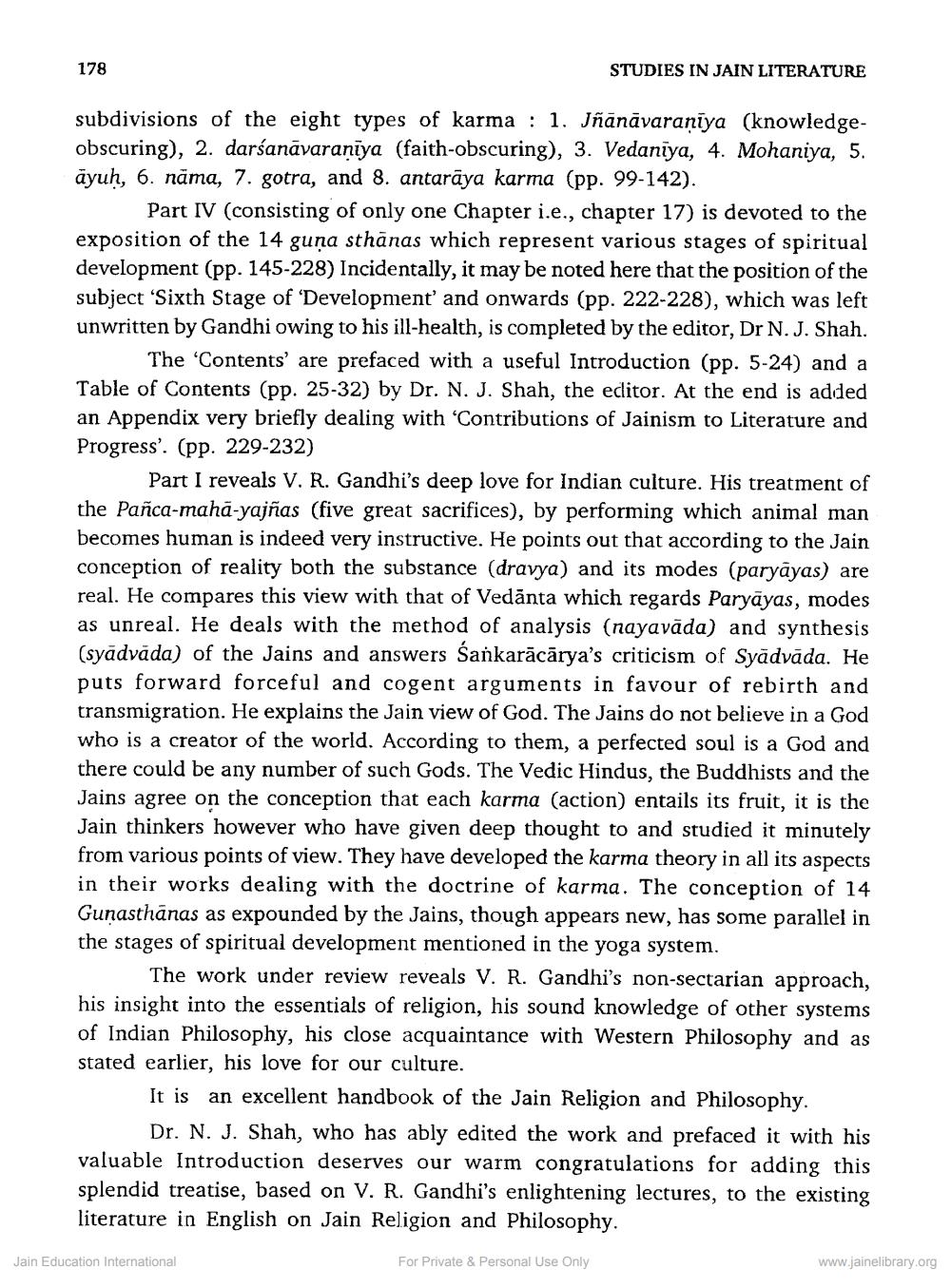________________ 178 STUDIES IN JAIN LITERATURE subdivisions of the eight types of karma : 1. Jnanavaraniya (knowledgeobscuring), 2. darsanavaraniya (faith-obscuring), 3. Vedaniya, 4. Mohaniya, 5. ayuh, 6. nama, 7. gotra, and 8. antaraya karma (pp. 99-142). Part IV (consisting of only one Chapter i.e., chapter 17) is devoted to the exposition of the 14 guna sthanas which represent various stages of spiritual development (pp. 145-228) Incidentally, it may be noted here that the position of the subject 'Sixth Stage of 'Development' and onwards (pp. 222-228), which was left unwritten by Gandhi owing to his ill-health, is completed by the editor, Dr N. J. Shah. The 'Contents' are prefaced with a useful Introduction (pp. 5-24) and a Table of Contents (pp. 25-32) by Dr. N. J. Shah, the editor. At the end is added an Appendix very briefly dealing with 'Contributions of Jainism to Literature and Progress'. (pp. 229-232) Part I reveals V. R. Gandhi's deep love for Indian culture. His treatment of the Panca-maha-yajnas (five great sacrifices), by performing which animal man becomes human is indeed very instructive. He points out that according to the Jain conception of reality both the substance (dravya) and its modes (paryayas) are real. He compares this view with that of Vedanta which regards Paryayas, modes as unreal. He deals with the method of analysis (nayavada) and synthesis (syadvada) of the Jains and answers Sankaracarya's criticism of Syadvada. He puts forward forceful and cogent arguments in favour of rebirth and transmigration. He explains the Jain view of God. The Jains do not believe in a God who is a creator of the world. According to them, a perfected soul is a God and there could be any number of such Gods. The Vedic Hindus, the Buddhists and the Jains agree on the conception that each karma (action) entails its fruit, it is the Jain thinkers however who have given deep thought to and studied it minutely from various points of view. They have developed the karma theory in all its aspects in their works dealing with the doctrine of karma. The conception of 14 Gunasthanas as expounded by the Jains, though appears new, has some parallel in the stages of spiritual development mentioned in the yoga system. The work under review reveals V. R. Gandhi's non-sectarian approach, his insight into the essentials of religion, his sound knowledge of other systems of Indian Philosophy, his close acquaintance with Western Philosophy and as stated earlier, his love for our culture. It is an excellent handbook of the Jain Religion and Philosophy. Dr. N. J. Shah, who has ably edited the work and prefaced it with his valuable Introduction deserves our warm congratulations for adding this splendid treatise, based on V. R. Gandhi's enlightening lectures, to the existing literature in English on Jain Religion and Philosophy. Jain Education International For Private & Personal Use Only www.jainelibrary.org




